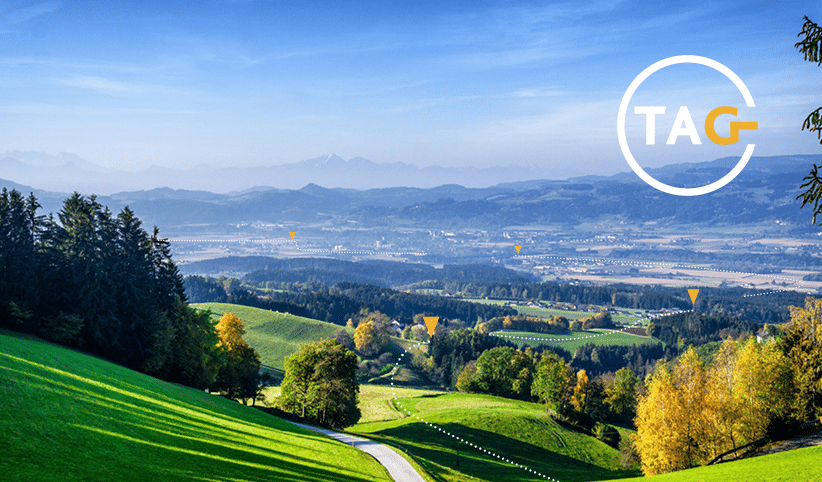Transmission
system &
Transportation
services
Your direct path to the supply of energy
Across Austria
Our pipeline system
At TAG, we think of our pipeline system as the artery of our company
It runs from the Austrian-Slovakian border near Baumgarten/March to the Austrian-Italian border near Arnoldstein and makes a vital contribution to energy security in Austria and beyond.
It comprises three parallel pipelines (TAG I, TAG II, TAG Loop 2) and five compressor stations, as well as entry and exit points, auxiliary facilities and a waste heat recovery unit. At a length of around 380 km from the Slovak border to the Italian border, the system comprises a total of 1,140 km of pipelines, making it Austria’s longest high-pressure pipeline system. Pipeline diameters range from 36 to 48 inches and pressure in the lines goes up to 70 bar. There are currently 16 gas compressors and four electrical compressors installed at the five compressor stations. Total installed power at the compressor stations is approximately 420 MW.
The SOL (Süd-Ost-Leitung or south-east pipeline) pipeline system of Gas Connect Austria GmbH, operated by TAG, which branches off from our TAG pipeline system at Weitendorf in Styria, also enables the transit of gas to Slovenia. Natural gas is carried to customers quickly and invisibly at a pressure of around 50 to 70 bar through underground pipelines with a diameter of approximately 1.0 m. Average flow speed is around 30 km/h. Friction and elevation differences continually reduce the pressure and thus the speed of the gas. To keep the flow of gas constant, compressor stations are located at regular intervals along the pipeline.
Electrical compressors, which are increasingly used today, are powered by high-speed magnetic bearing motors. This state-of-the-art technology is characterised by increased efficiency and a small footprint.
The pipelines run underground along the entire route, and numerous measures are in place to ensure their safety. External coating insulation and cathodic protection system guard against corrosion. Devices known as “pigs” are used to clean and check the technical condition of the pipelines regularly. Additionally, the entire pipeline route is regularly inspected: on foot, by vehicle and from the air. Each pipeline is equipped with shut-off valves every 15 to 20 km on average, so that individual pipeline sections can be isolated in case of incidents or malfunctions. The operating status is reported to a central monitoring station 24/7 via fibre optic cable or radio link.
One of our core functions is to ensure security of supply
We have grown to become a key European interconnector and make a significant contribution to supplying gas markets in Austria and in neighbouring countries including Italy, Germany and Slovakia.
TAG Pipeline
Bidirectional flow
Our pipeline is capable of bidirectional operation. Natural gas can be carried in both forward flow (from the SK/AT interconnection point at Baumgarten to the AT/IT interconnection point at Arnoldstein) and in the opposite direction, called reverse flow. Physical reverse flow took place for the first time in October 2022, when gas entered Austria from the south.
The import and export capacities of our neighboring countries have recently been expanded, particularly in Italy. This is very positive news for Austria, as the import capacities from Italy will be significantly increased starting in October 2024. The upstream Italian network has now been expanded, improved, and strengthened. Starting October 1, 2024, it will be possible to import ca. 11 GWh/h instead of the previous ca. 8 GWh/h. This means that Austria could import around additional 25 TWh of gas per year from Italy. Consequently, the yearly gas technical capacity from Italy to Austria will rise from 71 TWh to 96 TWh per year. This increase is particularly important at the start of the new gas year and significantly enhances supply security for Austria and interconnected markets.
Specification of natural gas
Gas quality
As a minimum, gas entering the TAG transport system must satisfy the criteria specified in the technical rules as defined in section 7 paragraph 1 no. 53 of the Austrian Natural Gas Act. These technical rules are listed in Annex 2 to the Gas Market Model Ordinance.
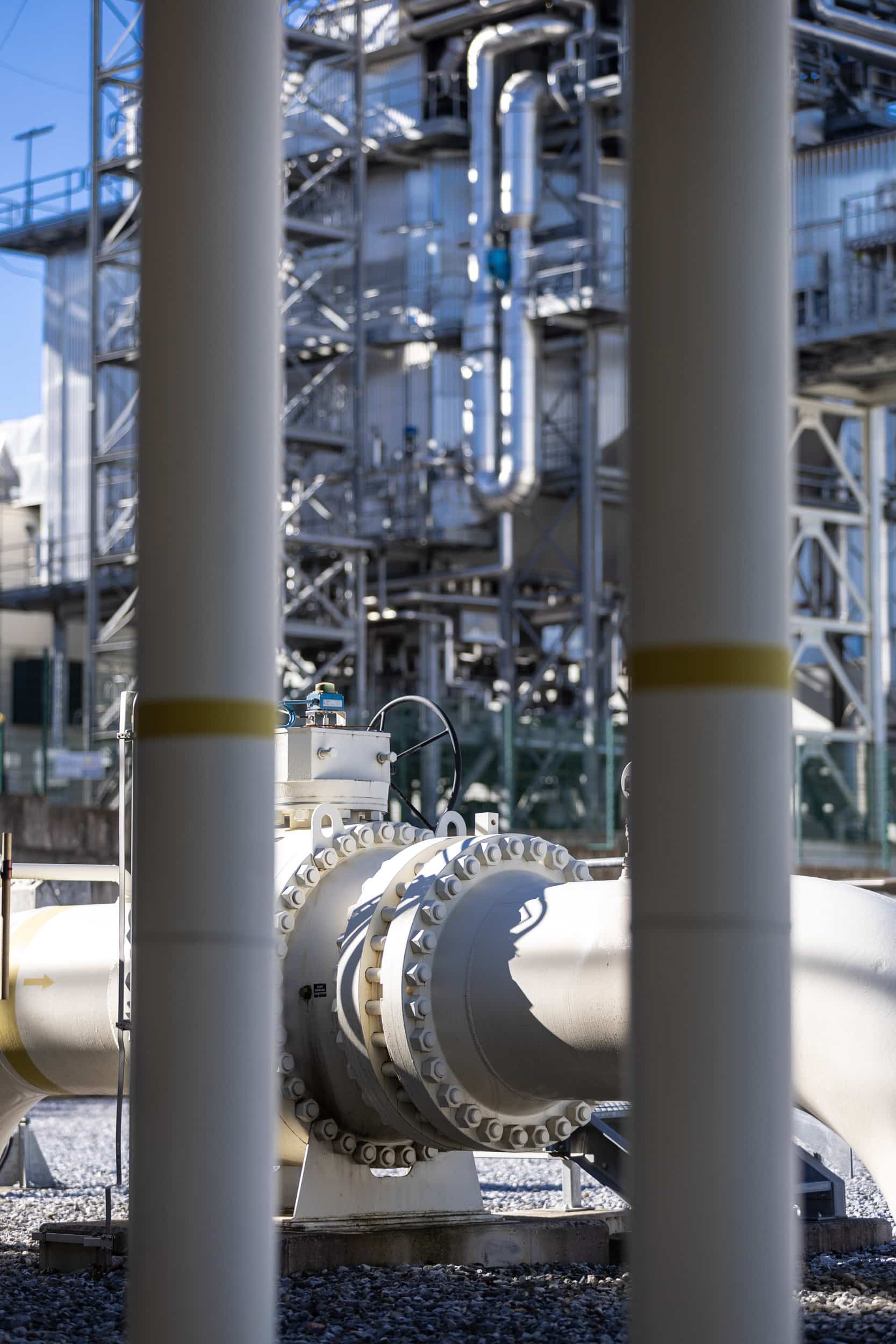
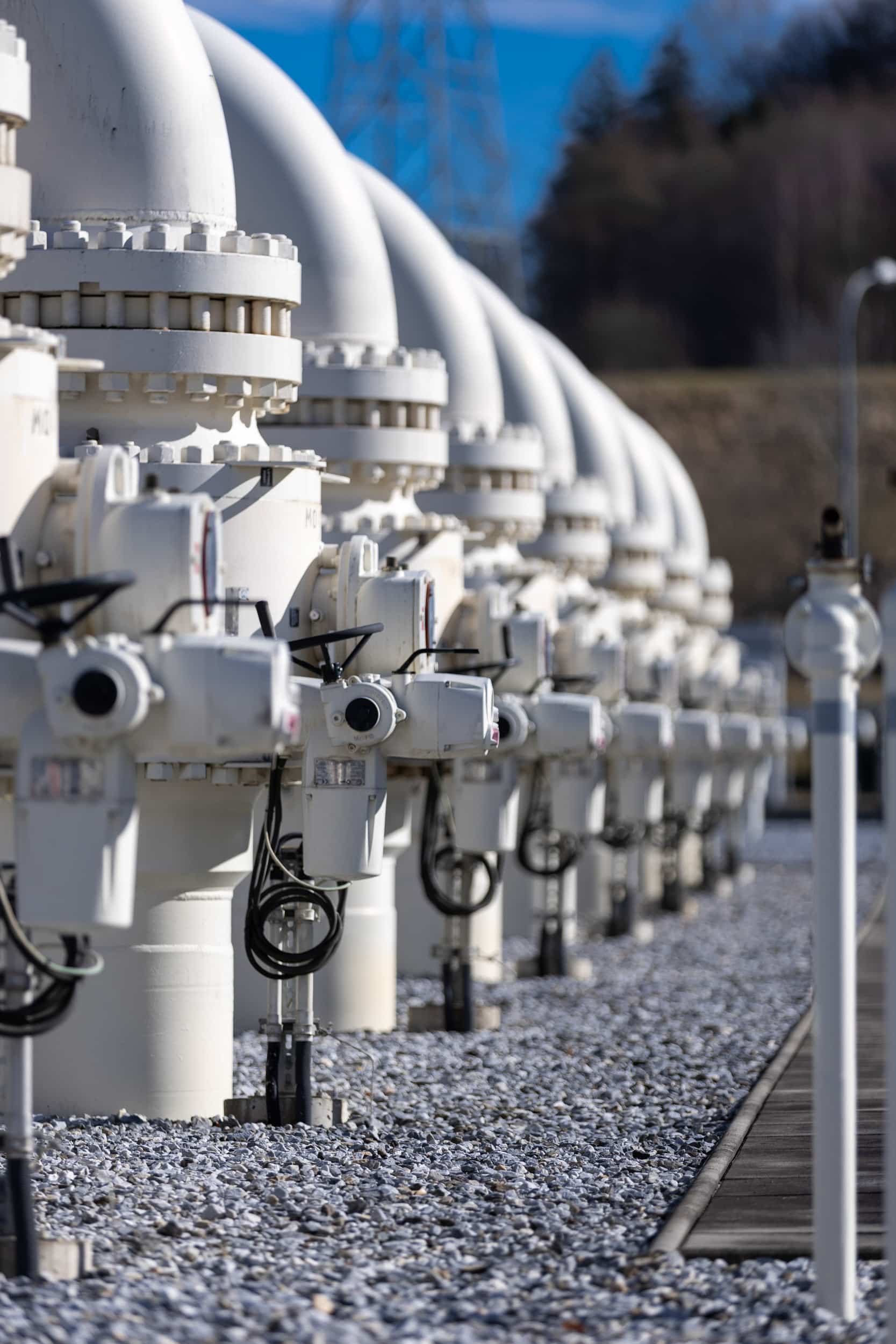
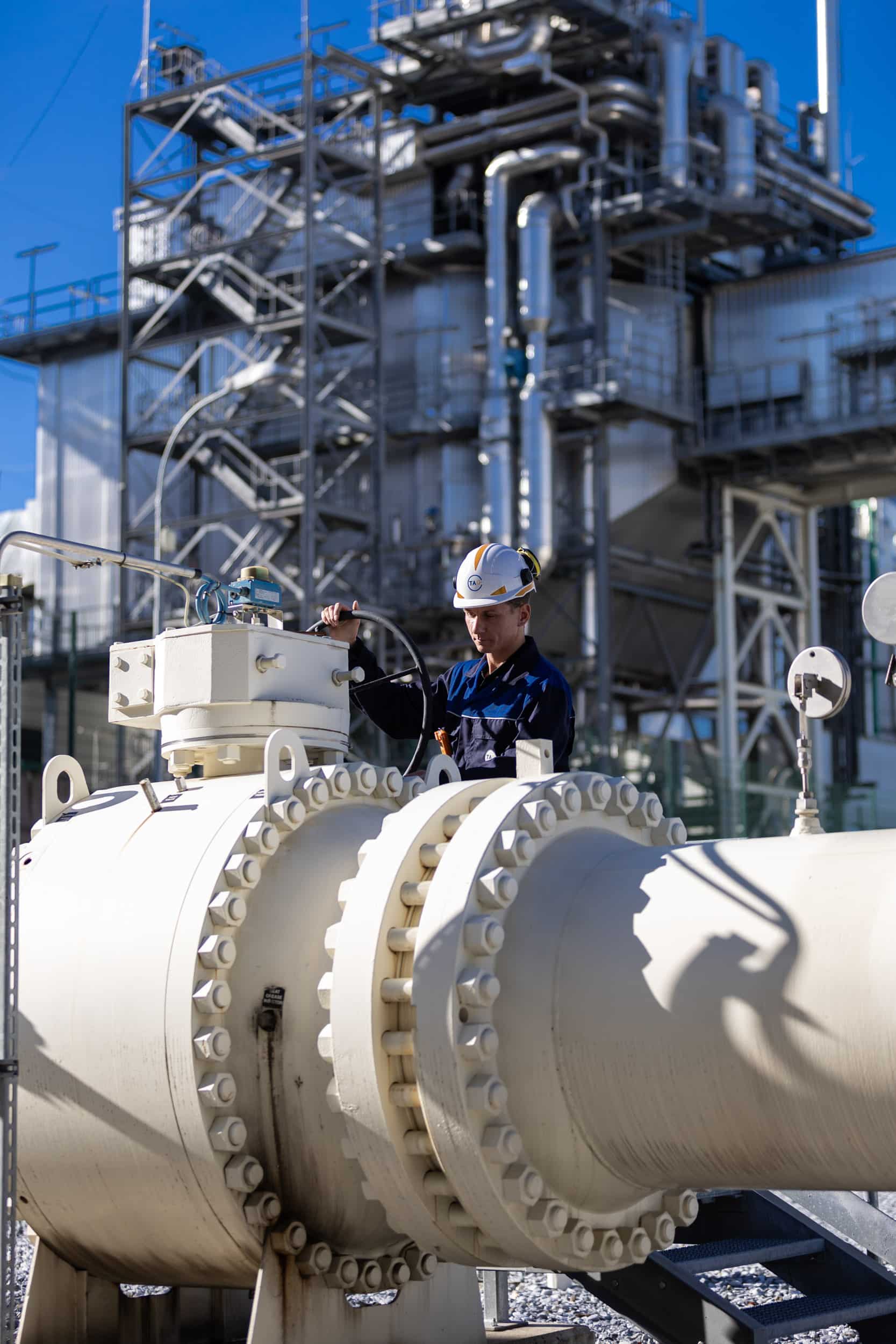
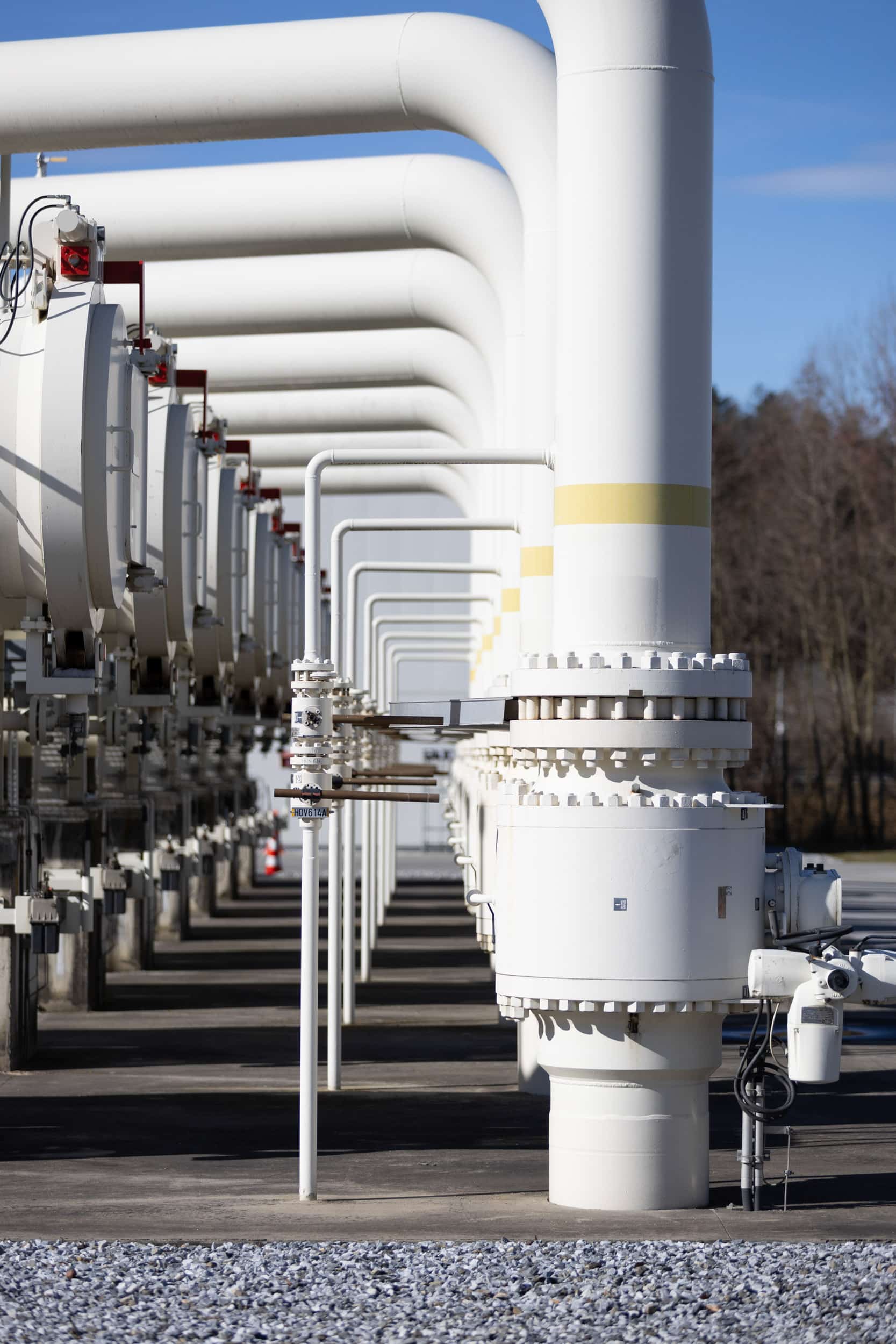
Entry and exit of gas
Entry and
Exit Points
Gas can only enter and leave the pipeline system at specific points, called relevant physical entry and exit points (“entry points” and “exit points”). The gas delivered to us by a shipper is measured at the entry point, and gas we deliver back to the shipper s is measured at the exit point. The entry and exit points connect our pipeline system to other transport systems.
Operating pressure
The operating pressure at the entry points of the TAG pipeline system is between 50 bar and 70 bar gauge. The delivery pressure at the exit points depends on the hydraulic conditions and must not exceed 70 bar gauge.
Physical entry points in forward flow
Principal entry point:
Baumgarten (Slovakian/Austrian border)
Definition:
The “Baumgarten entry point” is located at the Austrian-Slovakian border near Baumgarten/March in Lower Austria and connects the TAG pipeline system to the upstream gas transportation system of eustream, a.s. Here TAG receives natural gas and transports it south towards the Arnoldstein cross-border interconnection point to supply the Austrian market and for transfer to the Italian transmission system operator Snam Rete Gas.
Pressure:
Delivery pressure at the Baumgarten entry point is 50 to 70 bar.
Upstream TSO:
eustream, a.s.
Physical Entry Point (Reverse Flow)
Entry point:
Arnoldstein (Italian/Austrian border)
Definition:
The “Arnoldstein entry point” is located at the Italian-Austrian border near Arnoldstein in Carinthia and connects the TAG pipeline system to the transmission network of Snam S.p.A. Here TAG receives natural gas and transports it northwards to supply the Austrian market.
Pressure:
Delivery pressure at the Arnoldstein entry point is 50 to 70 bar.
Upstream TSO:
Snam Rete Gas S.p.A.
Physical exit points
Exit points with Gas Connect Austria GmbH :
Baumgarten an der March* , Eggendorf* , Grafendorf* , St. Margarethen* , Weitendorf* , Sulmeck-Greith* , Ettendorf* , Waisenberg* , Ebenthal* , Finkenstein*
Definition:
The exit points connect the TAG pipeline system with the facilities of Gas Connect Austria GmbH
Pressure:
Normally, natural gas is delivered to the exit point at a pressure of 50 to 70 bar.
Operator of downstream facilities:
Gas Connect Austria GmbH
* Gas Connect Austria GmbH is the owner of the metering equipment
Transport capacities
We are a leading transporter of natural gas in Austria. Our mission is to offer our transport capacities and services to the market transparently and in a non-discriminatory manner and so help ensure efficient security of supply in Europe.

In accordance with European law – Chapter 3 of Annex I to Regulation No 715/2009 on conditions for access to the natural gas transmission networks – we publish information on technical and booked transport capacities and quantities nominated, renominated and allocated, including reductions and calorific values, for each entry/exit point, on an hourly and daily basis, expressed in kWh/h and kWh/day.
Maintenance works
As required under the existing capacity contracts and the “General Terms and Conditions for Transmission Network Access of TAG GmbH”, approved by Energie-Control Austria on 27 September 2013 in accordance with section 32 of the Austrian Natural Gas Act 2011, Federal Law Gazette I no. 107/2011, as amended by Federal Law Gazette I no 174/2013, we give advance notice of planned maintenance works. For information about planned maintenance work for the entirety of the Market Area East, please visit the website of the market area manager.






